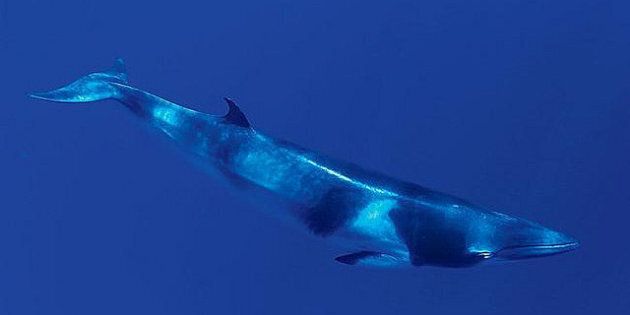
Scientists have been perplexed for years by a hypnotic, symphonic sound emanating from the deepest trench of the world’s oceans. Now they believe they have finally identified its source: elusive minke whales — but a type never before heard.
The eerie keening and clicks first recorded in the Mariana Trench east of Guam in 2014 was dubbed by discoverers the “Western Pacific Biotwang.” The otherworldly “song” soars in frequency from 38 to 8,000 hertz.
“It’s very distinct, with all these crazy parts,” said lead bioacoustics researcher Sharon Nieukirk at Oregon State University’s Hatfield Marine Science Center.
“What makes this call special is the second part, and the way it sweeps way up and it sort of has that metallic twang sound to it,” she told Oregon Public Broadcasting.
The sound is described in the researchers’ report in The Journal of the Acoustical Society of America as a “moan with both harmonics and amplitude modulation, followed by broad-frequency metallic-sounding sweeps.”
Nieukirk and her crew believe it’s the “novel” call of a minke whale, the smallest of the baleen whales. The singing is similar to other baleen whales but with an added unique signature. Researchers believe their recording of the call is the first time it has ever been heard.
The scientists are hoping other researchers may have or will gather data that can confirm their theory. “More data are needed, including genetic, acoustic and visual identification of the source, to confirm the species and gain insight into how this sound is being used,” said Nieukirk in a university statement.
The five-part song, which lasts from 2.8 to 3.5 seconds, was recorded by an underwater robotic glider equipped with a sensor in the fall of 2014 and spring of 2015.
The recorded call most closely resembles — but is not identical to — what researchers refer to as the “Star Wars” sound produced by dwarf minke whales on the Great Barrier Reef off northeast Australia, according to the Oregon scientists.
Like other baleen whales, minkes feed by using baleen plates in their mouths to filter krill and small fish from the ocean. Their sounds are specific to certain regions. Besides the “Star Wars” sound they emit what researchers refer to as “boings” in the North Pacific and low-frequency “pulse trains” in the Atlantic. Little is known about minkes because they don’t spend much time at the surface of the ocean, and travel largely in the more remote high seas.
Now that Nieukirk believes she knows where the sound is coming from, she wants it translated.
“If it’s a mating call, why are we getting it year-round? That’s a mystery,” Nieukirk said. “We need to determine how often the call occurs in summer versus winter, and how widely this call is distributed.”
She added: “Our hope is to mount an expedition to go out and do acoustic localization, find the animals, get biopsy samples and find out exactly what’s making the sound. It really is an amazing, weird sound, and good science will explain it.”